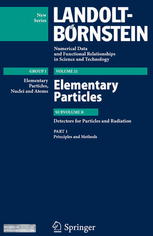

Most ebook files are in PDF format, so you can easily read them using various software such as Foxit Reader or directly on the Google Chrome browser.
Some ebook files are released by publishers in other formats such as .awz, .mobi, .epub, .fb2, etc. You may need to install specific software to read these formats on mobile/PC, such as Calibre.
Please read the tutorial at this link: https://ebookbell.com/faq
We offer FREE conversion to the popular formats you request; however, this may take some time. Therefore, right after payment, please email us, and we will try to provide the service as quickly as possible.
For some exceptional file formats or broken links (if any), please refrain from opening any disputes. Instead, email us first, and we will try to assist within a maximum of 6 hours.
EbookBell Team

4.3
68 reviewsCompetent experts provide a summary of the enormous progress achieved in the development of new detection methods of charged and neutral particles, and photons. These achievements were initiated by the advent of new particle colliders, e.g., the LHC at CERN, but also by non-accelerator experiments. Part 1 of Subvolume B reviews the interaction of particle radiation with matter, and describes particle detectors, like, e.g., scintillation, gaseous, solid state, time-of-flight, Cerenkov, transition radiation, and neutrino detectors. Calorimetry and nuclear emulsions are considered as well. Finally, signal processing for particle detectors, data treatment and analysis methods (including detector simulation, high-level data selection, pattern recognition, distributed computing, and statistical issues) are addressed.